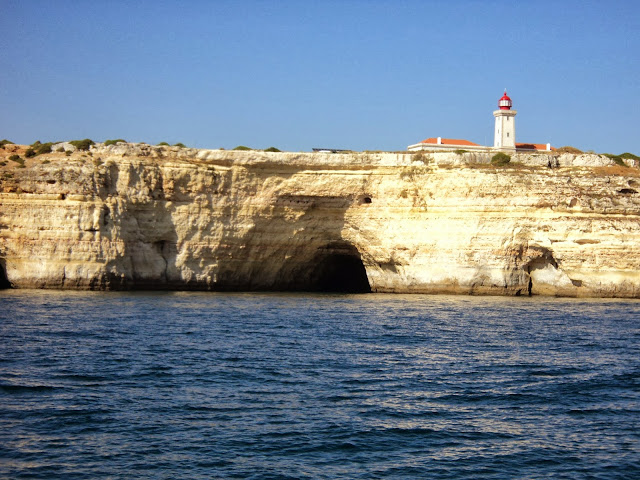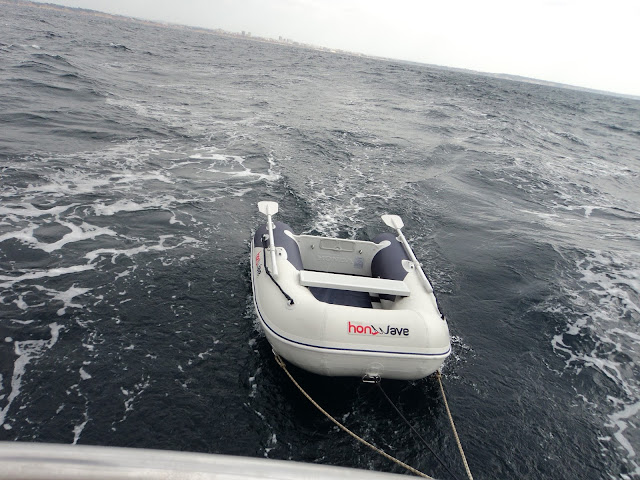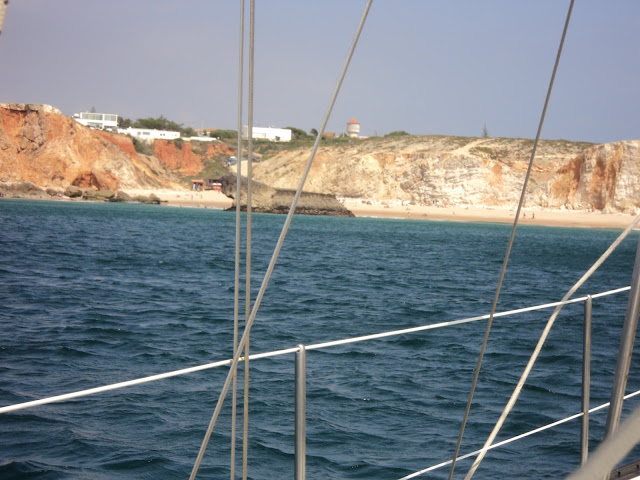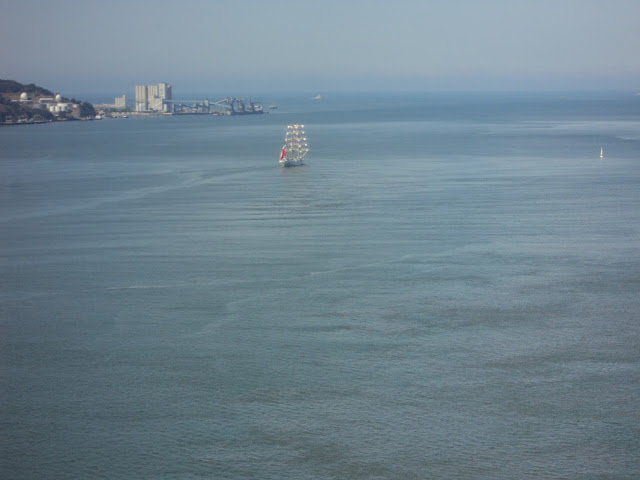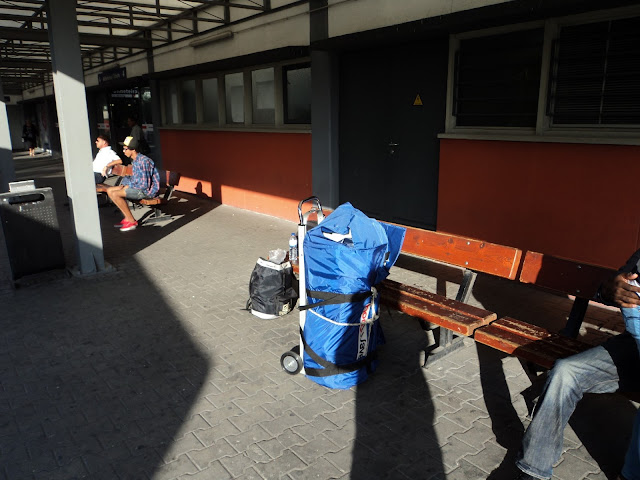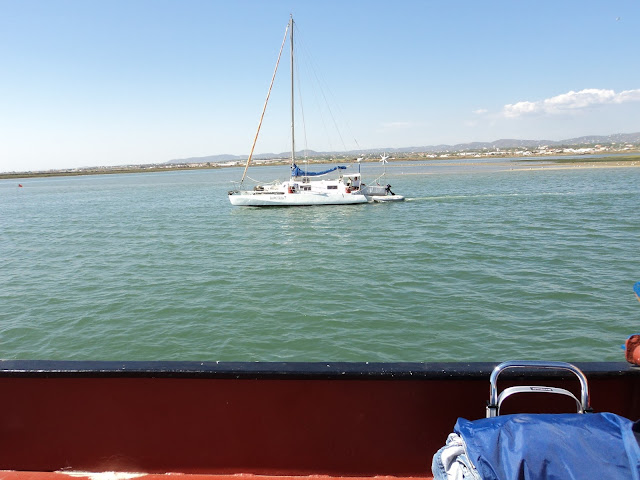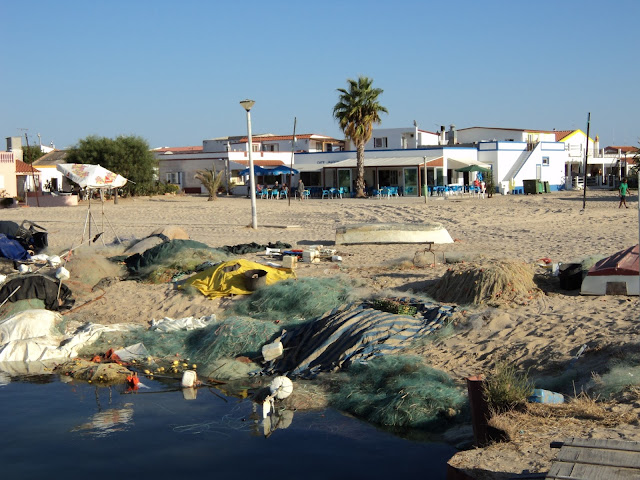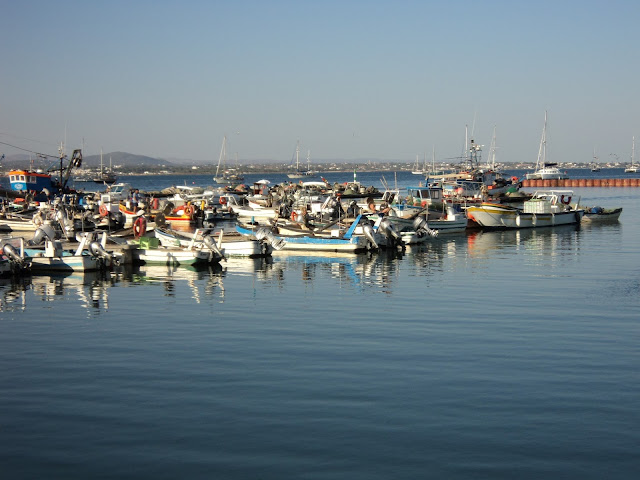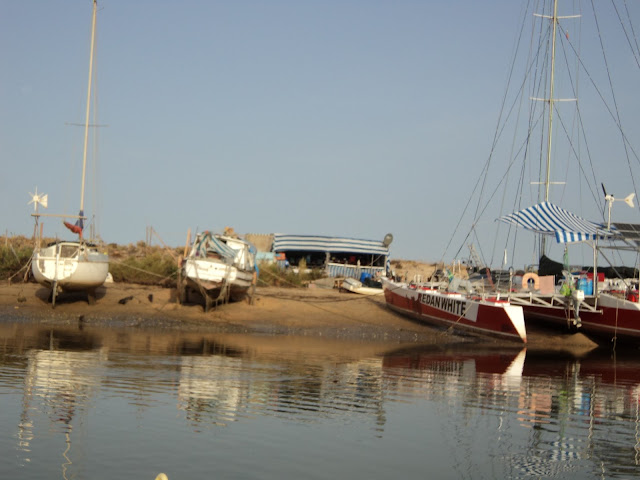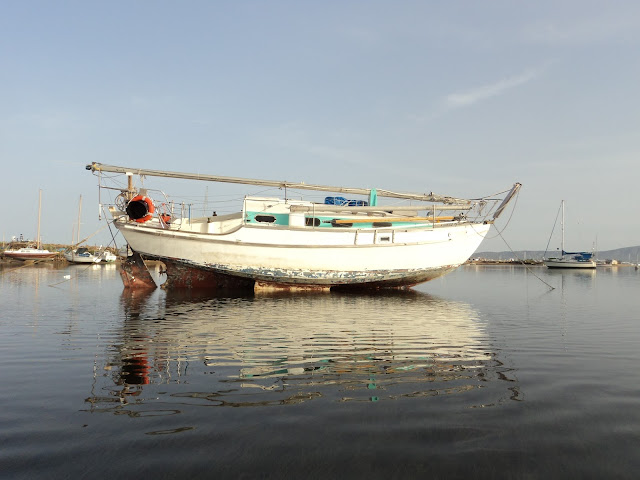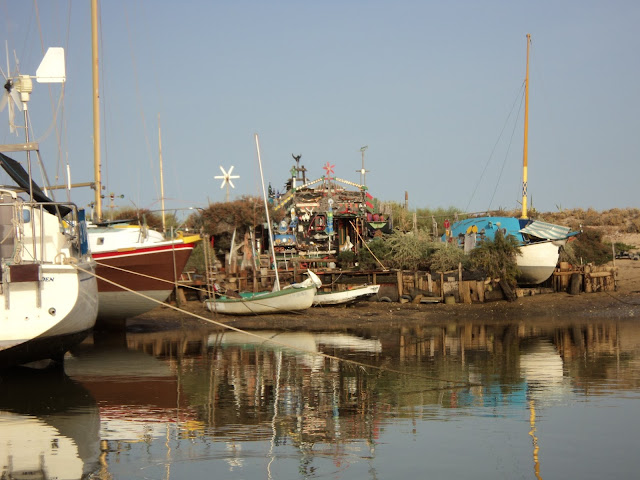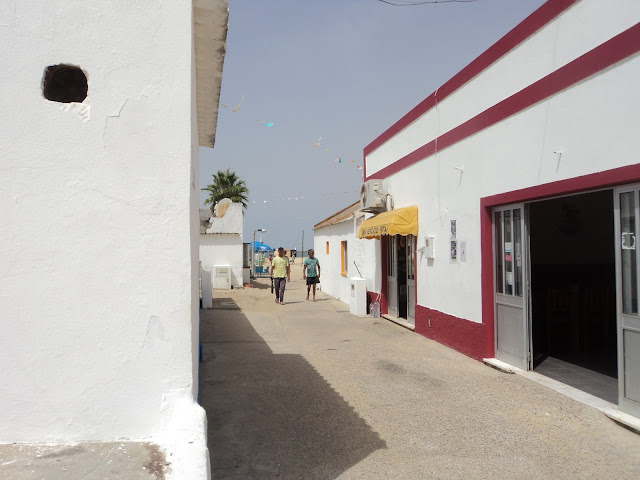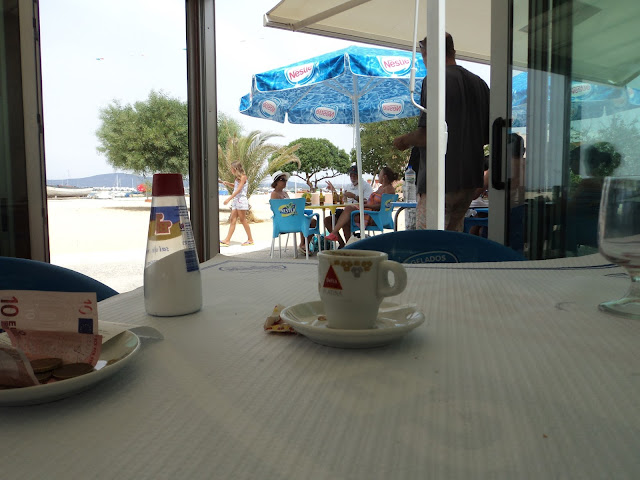The Beliche anchorage got a bit rolly when the wind died down at night. If there's one thing I hate, it's trying to sleep in a rolling boat. Maybe I wasn't rocked to sleep when I was a baby, I don't know. I got up at 6:00 anyway feeling a bit disgruntled, had breakfast and pumped the perfectly clean anchor up for the 58-mile leg to Sines.
After motoring past the very imposing Cape S. Vincente, a land breeze kicked in from the east. What luck! I pointed Jakatar into the wind, put the main halyard on the winch and, what's this?...the old Barlow winch wouldn't budge an inch. It worked fine in slow speed, but that would take forever to raise the sail. Pointing into the wind meant heading straight to a rocky shore. Time to think.
My boat may be naked, but it's got plenty of appendages. In no time I had a snatch block on a cleat redirecting the halyard to the genoa winch. And they say you can't teach an old boat new tricks.
 |
| An old trusty snatch block and I'm in business again. |
So I raised 2 sails, unfurled the genoa and began happily sailing north, a rarity this time of year. Happily that is until the wind stiffened, the boat heeled and I began hearing noises down below. Down below, all I saw was a plastic water bottle rolling back and forth making a racket; I always (almost) stow everything securely. Storage is one think I don't lack.
Time to put in a reef on the main; something I haven't done in a while. Here's how it goes: sail close as possible into the wind without the genoa flapping (the staysail is boomed and couldn't care less); push the autopilot button; ease the main out until it starts flapping; release the main halyard to a pre-marked distance; pull in the first reef line on the luff (yeah, I know, this is boring); pull in the leech reefing line; and, finally, tighten the halyard again.
It didn't go as smoothly as I described, not by a long shot. But like I said, I hadn't done this in a while. When the wind piped up some more, I got a chance to redeem myself by putting in the second reef in three minutes flat without leaving the cockpit.
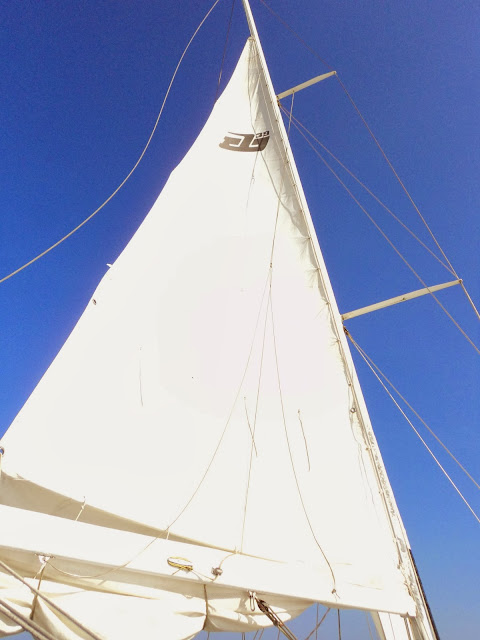 |
| Two reefs in by now and the genoa rolled in a bit. |
After a few hours of flying at over 6 knots, the damn wind started to shift north and weaken. Back to motoring until I reached Sines at about 6:30 pm and headed straight for the marina, took a hot shower in the posh facilities (only 23 euros per night). At the reception I also discovered that I could anchor off the beach for 12 euros and get a gate and bathroom card.
Hungry, I hurriedly climbed the long steps up to town, walked past the fort where Vasco da Gama was born and headed straight for Adega de Sines, one of the oldest, most charming and cheapest restaurants you'll ever find.
I sat on a stool at one of the long tables and the plump waitress with the perennial smile immediately came over.
"The chicken is all gone."
"What else you got?"
"Everything except the chicken."
This meant five other dishes posted on a blackboard at about 6 euros apiece. I ordered grilled turkey breast and a jar of red wine. After dinner I wandered around the narrow streets before heading back to the boat for a deep sleep.
Hungry, I hurriedly climbed the long steps up to town, walked past the fort where Vasco da Gama was born and headed straight for Adega de Sines, one of the oldest, most charming and cheapest restaurants you'll ever find.
I sat on a stool at one of the long tables and the plump waitress with the perennial smile immediately came over.
"The chicken is all gone."
"What else you got?"
"Everything except the chicken."
This meant five other dishes posted on a blackboard at about 6 euros apiece. I ordered grilled turkey breast and a jar of red wine. After dinner I wandered around the narrow streets before heading back to the boat for a deep sleep.

